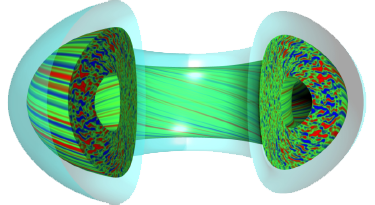Speaker
Description
A suggestion tool for experimental data analysis and tokamak proposal validation was developed using machine learning methods. The bidirectional LSTM neural network model was used, and experimental data from Experimental Advanced Superconducting Tokamak (EAST) campaign 2010-2020 discharges were used as the model training data set. Compared to our previous works (Chenguang Wan et al 2021 Nucl. Fusion 61 066015), the present work reproduces the discharge evolution process through more key diagnostic signals, including the electron density $n_{e}$, store energy $W_{mhd}$, loop voltage $V_{loop}$, actual plasma current $I_{p}$, normalized beta $\beta_{n}$, toroidal beta $\beta_{t}$, beta poloidal $\beta_{p}$, elongation at plasma boundary $\kappa$, internal inductance $l_{i}$, q at magnetic axis $q_{0}$, and q at 95% flux surface $q_{95}$. The similarity of electron density $n_{e}$ and loop voltage $V_{loop}$ is improved by 1%, and 5%. The average similarity of all the selected key diagnostic signals between modeling results and the experimental data are greater than 90%, except for the $V_{loop}$ and $q_{0}$. The model has two main application scenarios: After tokamak discharge experiment, the model gives an estimate of the diagnostic signals based on the actual actuator signals. When the actual value of the diagnostic signals is close to the estimated value it means that the discharge is normal, and vice versa it means that the discharge is abnormal or a new discharge mode occurs. Before the tokamak discharge experiment, the proposal designer sets the values of the actuator signals, and the model has the promising for giving the estimated values of the diagnostic signals to assist in checking the reasonableness of the tokamak experimental proposal.
| Country or International Organisation | China |
|---|---|
| Affiliation | Institute of Plasma Physics, Hefei Institutes of Physical Science, Chinese Academy of Sciences |

